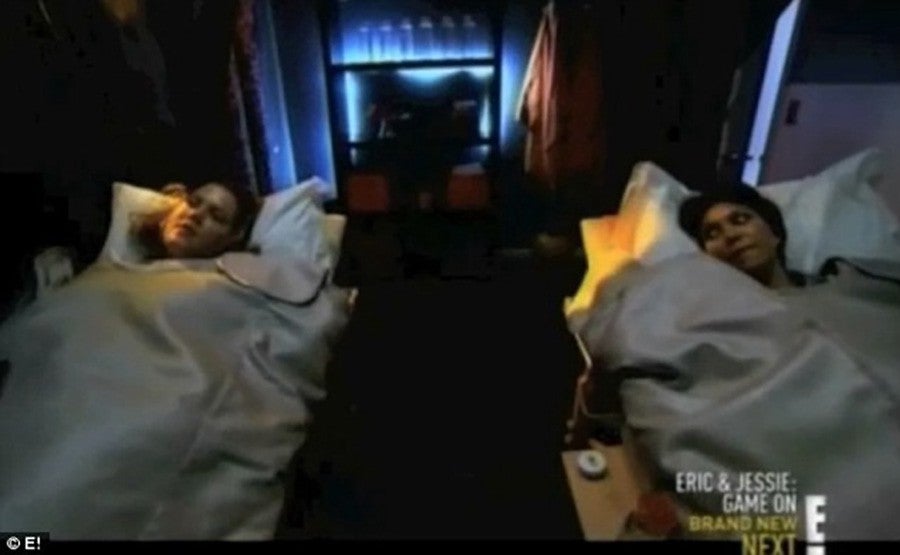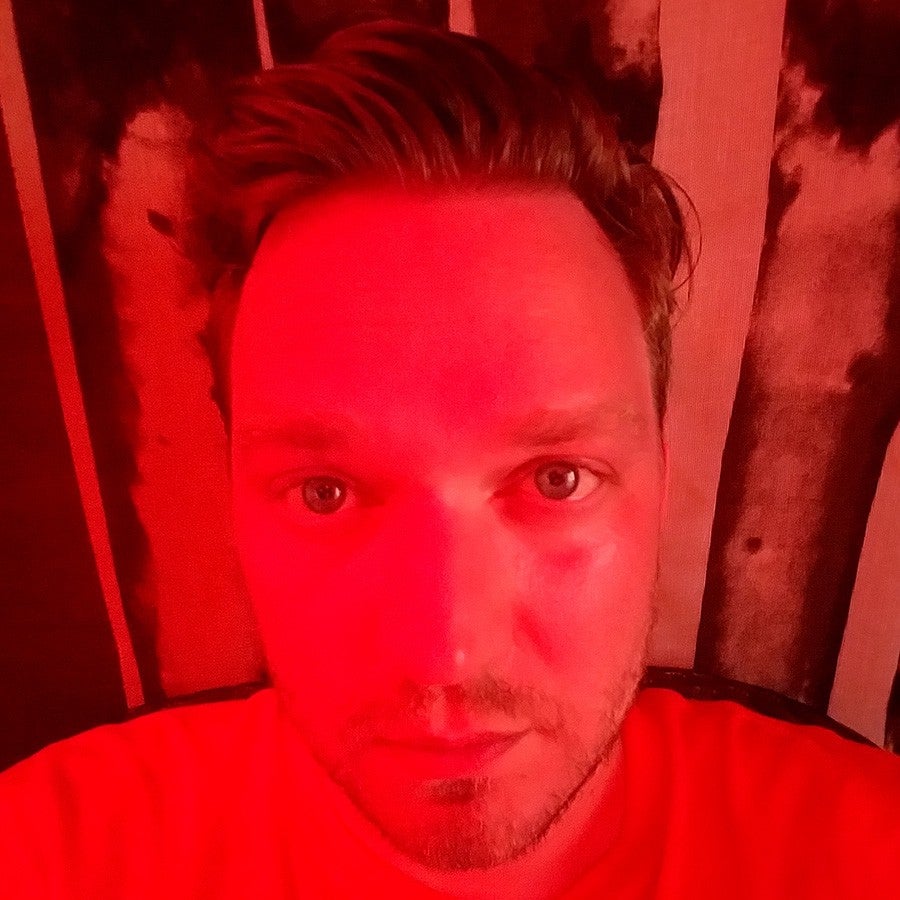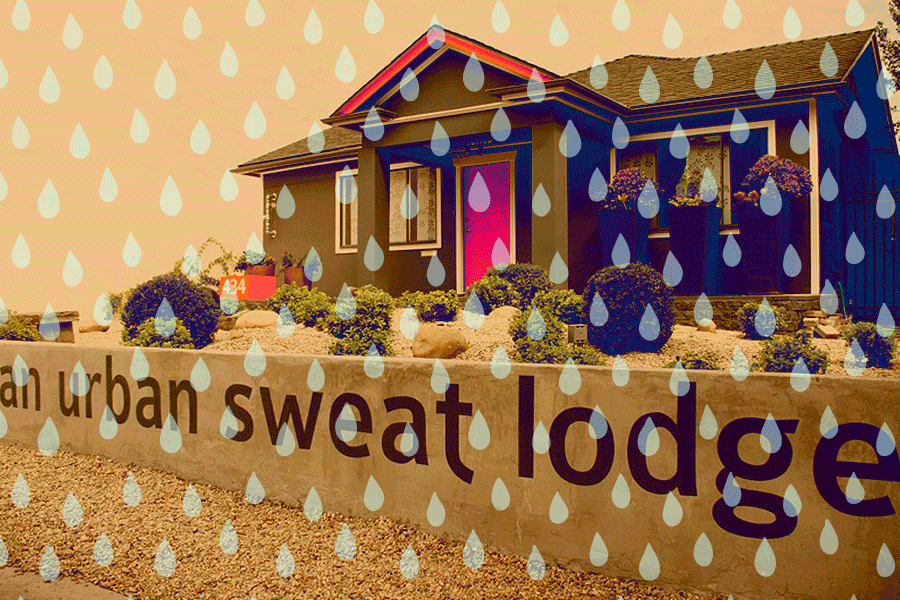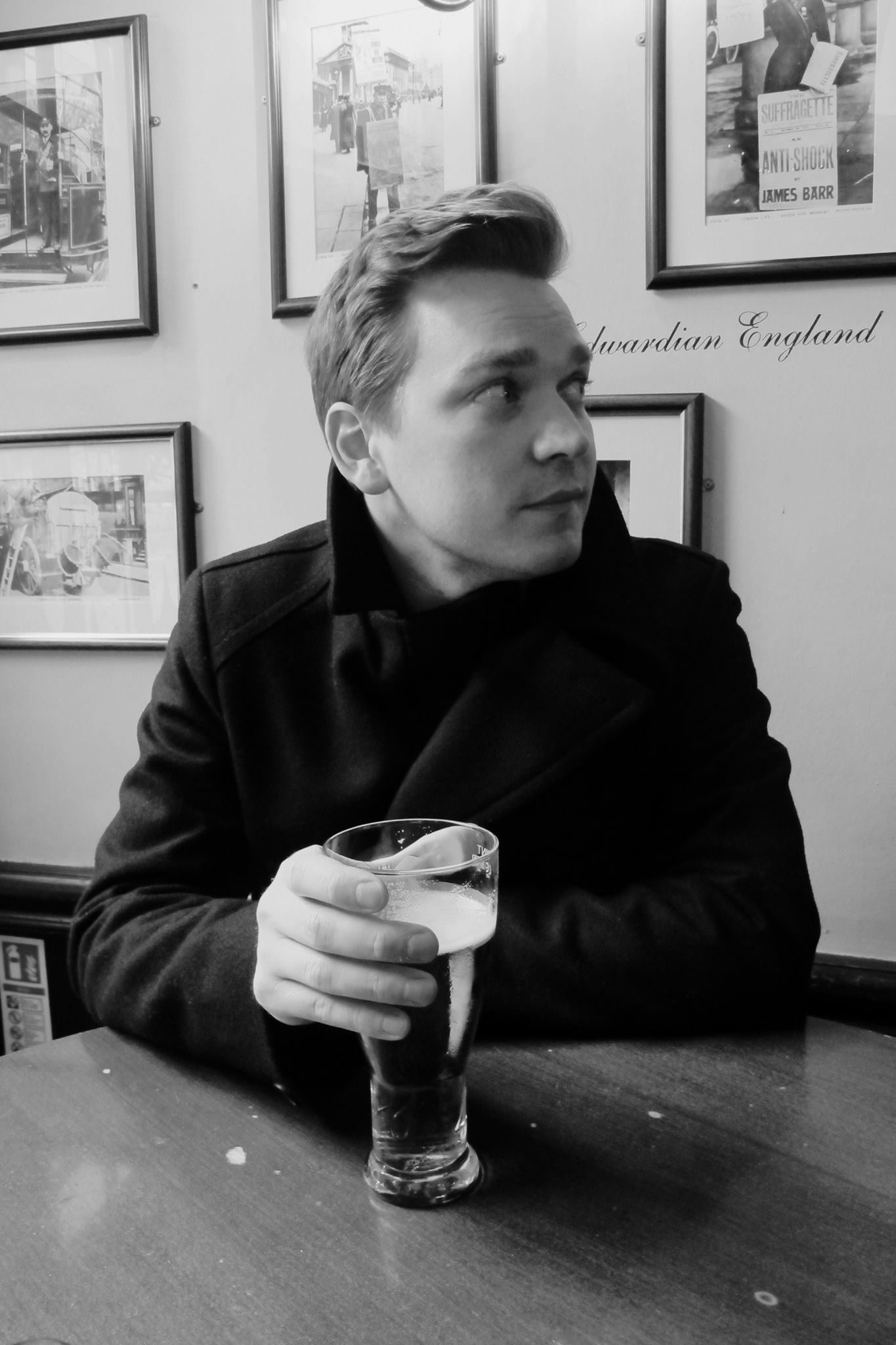If there’s one thing I hate in life — and there is not; I hate many things with equal vigor — it’s being too hot. In bed, my wife sleeps under two sets of covers, wearing pajamas, still shivering, while I lie naked, the covers thrown off, two limbs ideally hanging through the nearest open window. Heat is my mortal enemy: The sensation of sweat dripping down my back in a crowded, clammy subway station makes me want to tear off my own skin.
So, naturally, MEL decided I was the best person to send to an urban sweat lodge to spend 55 minutes sealed inside an infra-red sleeping bag that heats up to 160 degrees.
In July.
Wonderful.
Sweating, under the greater self-care umbrella of “detoxing,” has become popular in recent years. The idea, ostensibly, is this: Your body temperature is raised to the point where you sweat uncontrollably, toxins are expelled in a flood, and your heart is forced to work almost to the rate of an aerobic workout. The end result is that your pores are cleared, weight is lost and you generally feel serene and healthy.
This is all explained to me by Sophie Chiche, the charming French owner of Shape House, a sweating franchise that currently operates out of four separate venues in L.A. and one in New York City, with two more to follow there shortly. On the coasts, at least, the sweat business is booming (convincing people to pay around $50 a pop to sweat is presumably somewhat tougher in, say, Orlando). “It’s exciting because a lot of celebrities started coming, and they would talk about how much they loved it and how much it changed their life,” Chiche enthuses. “That really helped us launch.”
Indeed, Shape House was even featured in an episode of Keeping Up With the Kardashians, which contributed significantly to the business’s success.

“We opened the one in Santa Monica the day after that episode aired — unintentionally, but that’s how it worked out,” says Chiche. “It was our first day and we were like, ‘We have time to set up; nobody is going to know about it yet.’ I walked in at 7 a.m. to open the house and help the girls set up, and there were 40 people sitting outside. At 7in the morning! I asked them, ‘What are you doing here?’ And they said, ‘We saw it on the Kardashians.’ And I’m like, ‘Oh my God…’”
Dubious celebrity endorsement duly acknowledged, I head to Shape House’s Santa Monica location, where I’m given my special sweating outfit to change into: A bright orange long-sleeved shirt, gray sweatpants and a thick pair of gray socks (I’m assured they’re thoroughly cleaned to medical-grade standards between uses). I fill out a lengthy checklist of potentially dangerous medical conditions (“We don’t recommend it to people that are pregnant, who have an open wound — the amount of wet that it generates isn’t good for bacteria, obviously — if you have a heart problem or if you have low blood pressure,” Chiche tells me the next day), and I’m led to my bed.
The bed itself is private, situated in a slim, curtained-off row. It’s covered by a large gray plastic-looking sack, a cross between a futuristic sleeping bag and toaster oven. The lights are dim and a television with Netflix, Hulu et al is fixed to the wall at the foot of the bed. A bottle of water rests on one side. Were it not for the fact I’m about to be cooked like a boil-in-the-bag curry for one, it looks like a delightful place to take an afternoon nap.
I climb inside the bed and one of the many pleasant, smiling sweat techs helps fasten me in, sealing up the Velcro straps. “If you get too hot, you can take one or both of your arms out,” she tells me, although I’ve already privately resolved to remain inside for the entire 55-minute duration. Truth be told, my anxiety is already rising: When I discussed the visit with Chiche the day before, she warned me that the final 15 minutes of the experience are intense, and that my heart will be pounding as though I’ve just run a long race. I have a history of panic attacks. This sounds awful.
After a brief introductory video hosted by Chiche herself, I’m left to my own devices. Almost immediately, the heat feels suffocating: I head for the nearest air-conditioned building at the first hint of summer, so even the early phase is overwhelming, and it takes everything I have to continually override my instinct to climb quickly out of the humid sweat-sack.
I distract myself at first by scrolling through the “Recently Watched” menu on Netflix, looking for clues as to what sort of people the regular patrons might be. Sadly, it reveals nothing: Former customers’ taste have ranged from harrowing institutionalized racism doc 13th all the way to campy fluff like Glee and Twilight. I myself settle on Naruto, a Japanese cartoon about tween ninjas that I began binge-watching after the birth of my second child, when I would be sitting up holding her for hours each night, and a show where someone explained the entire plot every 10 minutes was the only thing I could follow. (I’m not the first to watch this show here, either, although I do notice that whatever godless animal lay in this bed before me chose to watch it dubbed, rather than with subtitles.)
The heat, meanwhile, continues to build. When I later ask Chiche what temperature this bed heats the human body to, she tells me that it’s hard to tell, but, “I’ve taken my temperature while I’m in the bed, and you do rise to the temperature that would be a fever.” The difference, though, is that any time I’ve had a fever, I’ve felt freezing cold — here, the heat is all-consuming. By the time I’m 20 minutes in, I’ve already got one arm out of the bag, and I’m thrashing around, hopelessly looking for a cool spot, which very specifically doesn’t exist.
At what I imagine to be the halfway point, I despair at the thought that I don’t know if I can make it through the whole thing. Every inch of me is baking, drenched with sweat. My clothes are stuck to me, and I just want to climb right out of my body. You’re just lying down and watching TV in a bag. Get a grip! I tell myself. But I can’t: I’ve never, in my life, been so uncomfortable.

Mercifully, I’m completely wrong about the time. I’d been told that with 15 minutes to go, someone would come in and place a cold, damp, lavender-scented towel on my forehead to ease me through the difficult final section. When this happens 10 minutes earlier than I expect — time flies when you’re being fricasseed, it seems — I’m pathetically grateful.
“Struggling?” asks the kind, kind woman who gives me the towel.
“Uh-huh,” I whimper, wretchedly.
She smiles. “You’re doing okay — a lot of people don’t make it all the way through on their first time.”
Buoyed by my apparent toughness — look at me now, Dad, I can stay in a warm bed! — I soldier on. By now both arms are out of the bag, and I’m dabbing the lifesaving cloth at any exposed skin I can reach. Both my hands are tingling in a worrying manner that I’m hoping is just an anxiety attack.
Then, finally, it’s over.
Someone undoes the sack, and I bring my knees up to my chest, heaving. I feel like I’m going to faint: It takes me a minute or two before I can sit up, another minute or two to stand. I walk to the bathroom on wobbly legs, where I hide for 10 minutes having a private, deeply silly panic attack. When I’m done, I walk unsteadily into the recovery room.
It’s softly lit, bordered by comfortable chairs and playing music of the harmless Coldplay variety. It also has a fan. I start to feel more normal almost as soon as I sit down, and once they bring me a bowl of cold orange slices to eat, everything suddenly feels better. I wouldn’t say I’m feeling euphoric or especially cleansed, but I don’t feel like I’m going to throw up anymore, and this, at least, is a vast improvement.
My main question when I’m done is to wonder, physically speaking, what I got out of the experience. What, after all that, are the real, actual benefits of sweating?
“The base of it is that we’re helping the body release toxins,” explains Chiche. “The way to look at it is like when your car doesn’t run well: You take it to a mechanic, and they take all the trash out of the engine and the different parts so that the car runs better. It’s the same idea — when you remove toxins from the body, you bring the body back to a state where it can do its job.”
Chiche adds that the sort of sweating that occurs in sweat-lodge conditions is different than the sweat you work up while exercising. “There was an experiment on the level of toxicity in the sweat [in both lodge sweaters and workout sweaters],” she says. “With runners and cyclists, 5 percent of the sweat that came out of their body was toxins. But then they did it with what we do, and the percentage was 29 or 30 percent — it was dramatically more.”
But what toxins, exactly, are we talking about here? Here’s where Chiche’s answers get a little more vague, and after I phrase the question three different ways, she finally tells me that she can’t speak to the medical side of it. “I’m not a doctor, so I can’t walk you through the exact process… [but] you can certainly find the answer to what you just asked online,” she promises.
Opting for a more reliable source of information than the internet, I turn to George Preti, a specialist in human secretions at the Monell Chemical Senses Center in Philadelphia. “Unless they can answer the question of what the toxins are, I would consider it a lot of hooey,” he says bluntly, laughing. “They have a quantitative measurement, but they can’t tell you what they measured?”
He goes on to explain that sweating isn’t a manner by which the human body generally expels toxins. “I’ve never understood what they’re talking about in terms of toxins — urea, ammonia and things like that are all processed by the kidneys,” he explains. “My daughter works for the nationwide dialysis firm, DaVita. I’ll have to ask her if, when one of their machines fails, they send their patients to a sauna.”
“So are there are no toxin-removal benefits for an average person in sweating like this?” I ask again.
“No,” says Preti. “When you go to a sauna, you’re going to sweat eccrine sweat, mostly. You’ll lose a lot of water and salt, just like you would if you were exercising, then you replenish with Gatorade to put the electrolytes back. So I don’t know what the rationale is for ‘toxins’ being removed.”
So perhaps looking for real health benefits here is just wishful thinking — another way to rationalize watching TV as a viable replacement for getting some exercise. But at the end of the day, maybe that doesn’t matter: People, by and large, don’t care about the science of the thing they’re doing — they do it because it makes them feel better. Sure, the vast majority of so-called self-care is built on flimsy quasi-science — soup cleanses are worthless and temporary; brain training provides no measurable cognitive benefit; the very concept of “detoxing” is, biologically speaking, absolute nonsense — but a self-administered placebo is a hell of a drug. Self-care is now a $400 billion industry, and all anyone really wants for their money is to feel good at the end of it.
Katrina, for example—the enthusiastic woman sitting next to me in the recovery room. She’s been coming here for more than a year, sometimes twice a week. The recovery room, she tells me, is normally packed, and unless she makes an appointment several days in advance, she can’t even get into the building. Chiche offers similar stories, recounting the tale of a friend who literally broke down in tears when told there was no room for her that afternoon.
“Honestly, compared to the amount of people that love it, I would say that [the number of people who don’t enjoy it or can’t handle it] is so minimal that it’s not a relevant issue,” says Chiche. “If you drew a graph, it would be one out of 20,000 sessions where maybe someone is not loving it.”
Katrina certainly seems to agree, impressing upon me that she tells everyone who’ll listen about the experience: That it makes her feel energized and refreshed, and that she’s lost a good 10 pounds over the last year of appointments. (I weigh myself when I get home: I’ve put on 2 pounds since my morning weigh-in; it seems I am, in every aspect of sweat lodge culture, a mutant.)
Disappointingly, the later feeling of total well-being that both Katrina and Chiche describe as being standard post-sweat never comes either. Instead, on the drive home (air conditioner full blast, naturally), I’m just beset by a feeling of monstrous, crushing tiredness.
I will say this for the experience: I slept well that night. Or at least I did once I’d dropped two limbs through the bedroom window.

